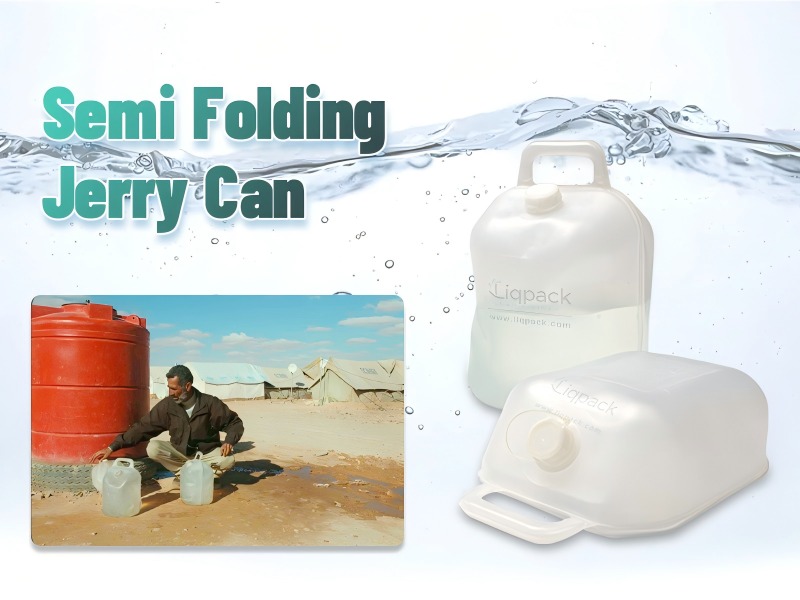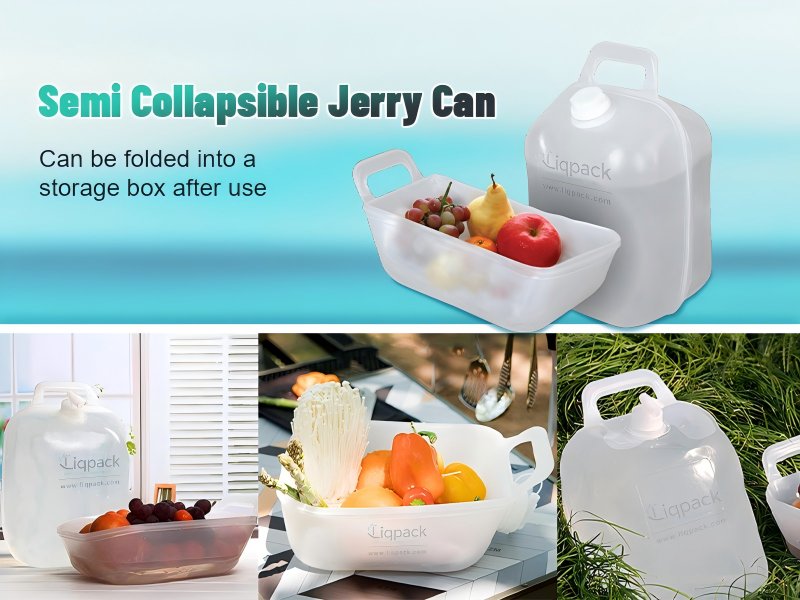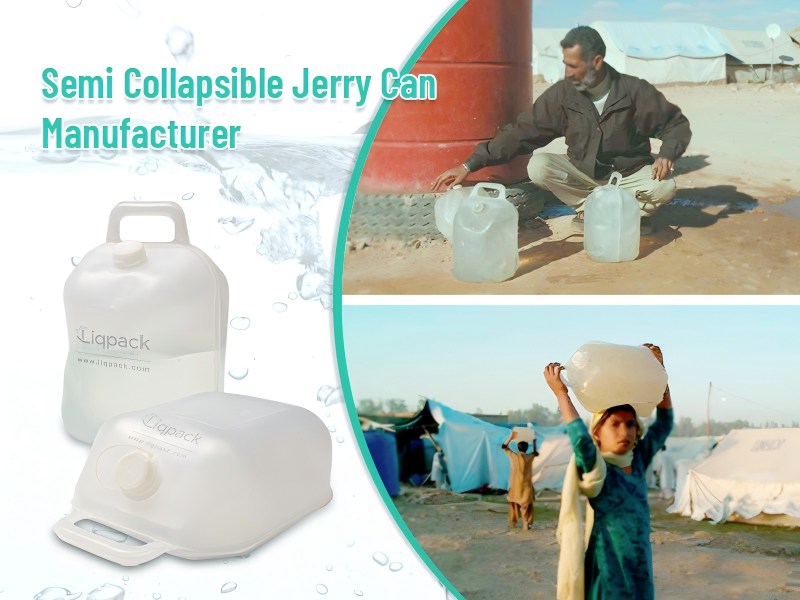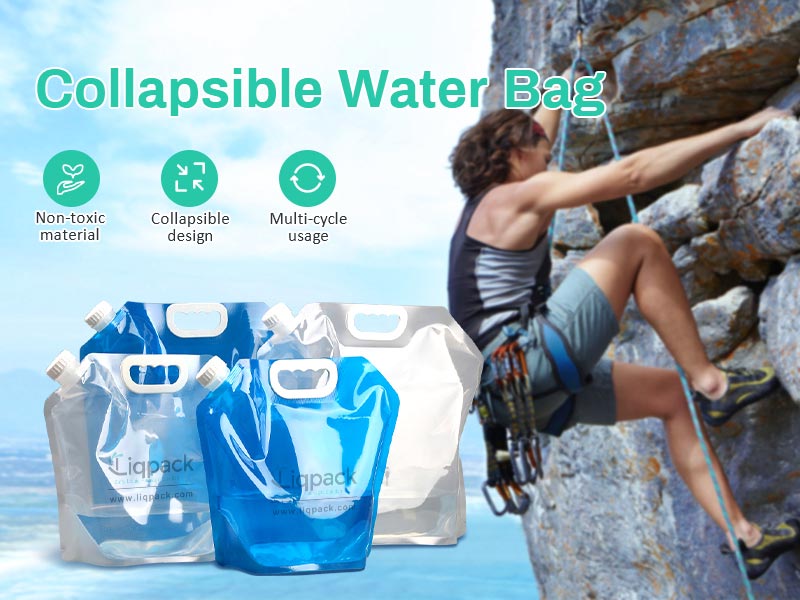
In many isolated and disaster-affected places, access to potable water is still a significant obstacle. Traditional storage options like rigid containers are often costly and hard to transport. Collapsible water bags have become a practical solution—lightweight, flexible, and easy to carry, they simplify water collection and storage.
Challenges of Water Supply in Remote Areas
In remote areas, whether rural villages or temporary refugee settlements, the simple act of obtaining water can be complex and physically demanding. Several common challenges include:
- Lack of infrastructure: No piped water systems, distribution grids, or road access for water trucks.
- Geographic barriers: Harsh terrain such as mountains, forests, deserts, or flooded plains complicates transport.
- Long-distance water retrieval: People may walk several kilometers daily to fetch water from rivers, wells, or springs.
- Storage limitations: Once collected, water must be stored in safe, hygienic containers, often unavailable locally.
- Cost and weight: Traditional jerry cans, barrels, and tanks are heavy and costly to ship in large quantities.
These factors not only hinder daily life but also lead to increased health risks, especially in crisis zones or areas with high rates of waterborne diseases. Addressing these logistical and safety issues requires innovative, adaptable solutions—and that’s where collapsible water bags come in.
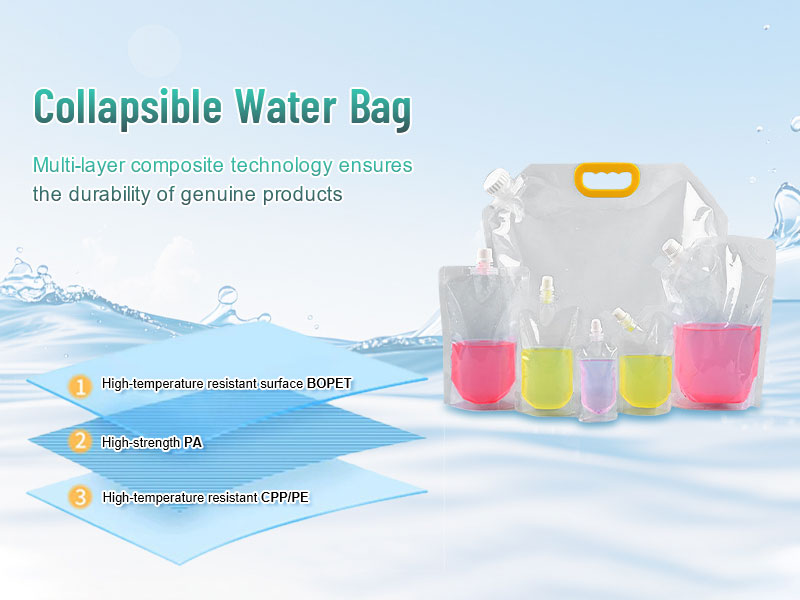
Key Features of Collapsible Water Bags
Collapsible water bags, also called flexible water carriers or foldable water containers, are designed with portability and practicality in mind. Here are their most common features:
- Flexible Material: Made of tough food-grade plastic such as LDPE.
- Lightweight and Foldable: They take up very little room in a shipment box or backpack when empty, as they can be rolled up or folded flat.
- Leak-Proof Spouts and Caps: Most models come with secure closures, twist-off caps, or nozzles that prevent leaks and ensure controlled pouring.
- Integrated Handles: Built-in handles or straps make them easy to carry by hand, even for children or the elderly.
- Range of Sizes: Available in capacities from 1 liter to 20+ liters, they can meet a variety of needs—from personal hydration to household water storage.
These features make collapsible bags ideal for use in remote, off-grid, and resource-limited locations, especially when traditional infrastructure is absent or damaged.
Advantages in Remote and Emergency Settings
Easy Transportation and Storage
One of the greatest advantages of collapsible water bags is their ease of transport. Unlike bulky rigid containers, these bags can be compressed into compact sizes when empty, enabling:
- Efficient shipping: Hundreds of empty bags can be packed into a single box, lowering shipping costs.
- Portability on foot: Ideal for people traveling by foot, bicycle, or pack animal to reach remote water points.
- Minimal storage space: They’re easy to store before deployment in emergency response kits or community aid programs.
Their compact design is especially valuable during natural disasters or conflict situations when speed and flexibility in distribution are essential.
Cost-Effective and Scalable
Collapsible water bags offer a high-impact, low-cost solution to water storage. Their advantages include:
- Low production costs: Compared to rigid alternatives, collapsible bags are cheaper to manufacture and replace.
- Mass distribution potential: Relief agencies can deliver thousands of units quickly and affordably.
- Custom branding and labeling: NGOs and governments can add educational graphics, safety instructions, or logos directly onto the bag for outreach purposes.
Their affordability makes them scalable, allowing for distribution at the household level rather than relying on centralized systems alone.
Sanitation and Water Security
Safe storage of water is just as vital as having access to clean water. Collapsible water bags are designed to maintain hygiene by:
- Using food-safe, BPA-free linings that prevent leaching or contamination.
- Reducing recontamination by providing sealed spouts and no-touch dispensing.
- Limiting open exposure, especially compared to open buckets or reused containers.
In areas prone to cholera or typhoid outbreaks, these bags can significantly reduce waterborne illness by enabling safe water handling from source to consumption.
Reusability and Environmental Impact
While many collapsible bags are designed for single use in emergencies, others are built for multiple uses with proper cleaning and care. Benefits include:
- Extended product life: Durable models can last weeks or months in the field.
- Reduced plastic waste: Replacing thousands of plastic bottles with a single reusable bag improves sustainability.
- Recyclability: Some models can be recycled after use, depending on local systems and materials.
For organizations focused on environmental impact, collapsible water bags align with broader goals of reducing carbon footprint and plastic pollution.
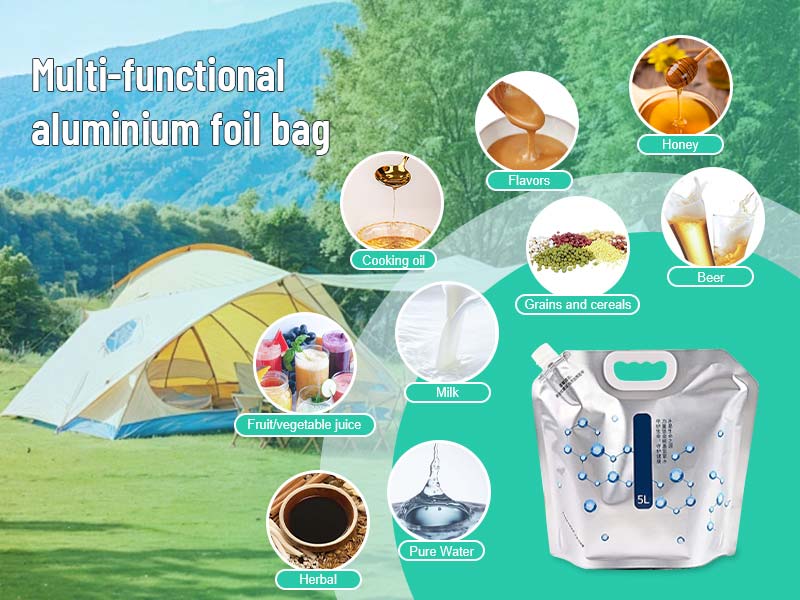
Use Cases and Real-World Applications
Humanitarian Aid and Disaster Relief
In emergencies, rapid response is critical. Collapsible bags have been used by major organizations such as the UNHCR, Red Cross, and Doctors Without Borders to:
- Provide emergency drinking water in refugee camps or disaster zones.
- Store water for handwashing stations in field hospitals or isolation tents.
- Distribute water door-to-door during urban water outages or conflict evacuations.
Because they’re so light and fast to deploy, collapsible bags allow first responders to reach vulnerable populations quickly.
Off-Grid Communities and Rural Development
In rural villages without piped water, collapsible bags play a role in daily life. Use cases include:
- Household water storage after fetching from a shared well or community pump.
- Rainwater harvesting, where collected rain is stored safely in clean, closed bags.
- Mobile water delivery allows NGOs or governments to bring water to isolated homes during droughts.
These bags support dignified access to water while empowering families to manage their own resources safely.
Military and Field Operations
Soldiers, field medics, and humanitarian staff operating in rugged environments also rely on collapsible water bags:
- Easy to carry in packs or vehicles
- Useful for field sanitation (handwashing, cooking, cleaning)
- Collapsible when empty, freeing up space as missions progress
They serve as a reliable hydration and utility tool during operations where infrastructure is absent.
Considerations for Effective Use
To get the most value from collapsible water bags, a few key considerations should be addressed:
- User training: Local users should be shown how to fill, carry, and clean the bags properly to avoid contamination.
- Material quality: Choose bags made from strong, puncture-resistant, BPA-free plastic for safe, long-term use.
- Size selection: Offer a variety of bag sizes to accommodate different users—smaller bags for children or elderly individuals, larger ones for families.
- Distribution planning: Ensure there is a reliable water source and refill system in place. Bags are only as useful as the access they support.
Implementing these best practices can increase the effectiveness and lifespan of collapsible water bags in the field.
The flexible, portable, and affordable design of the Collapsible water bag is ideal for areas where infrastructure is scarce or completely lacking. Meeting basic water needs by providing a safe, scalable water supply.
- Liqpack

